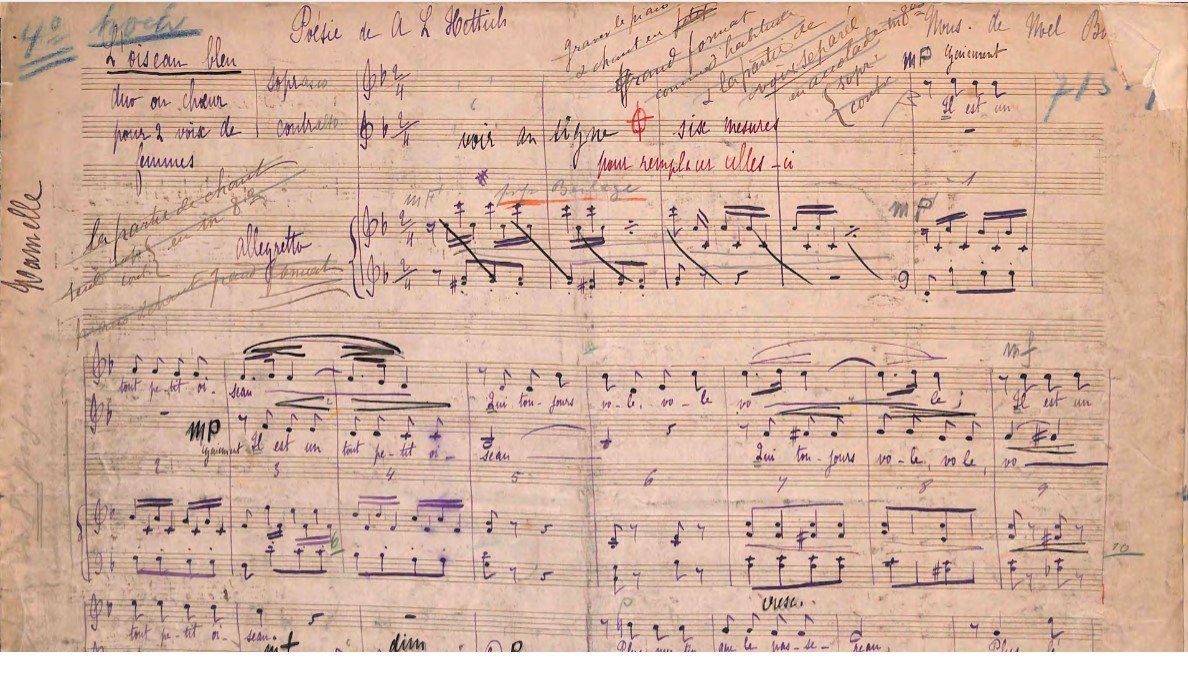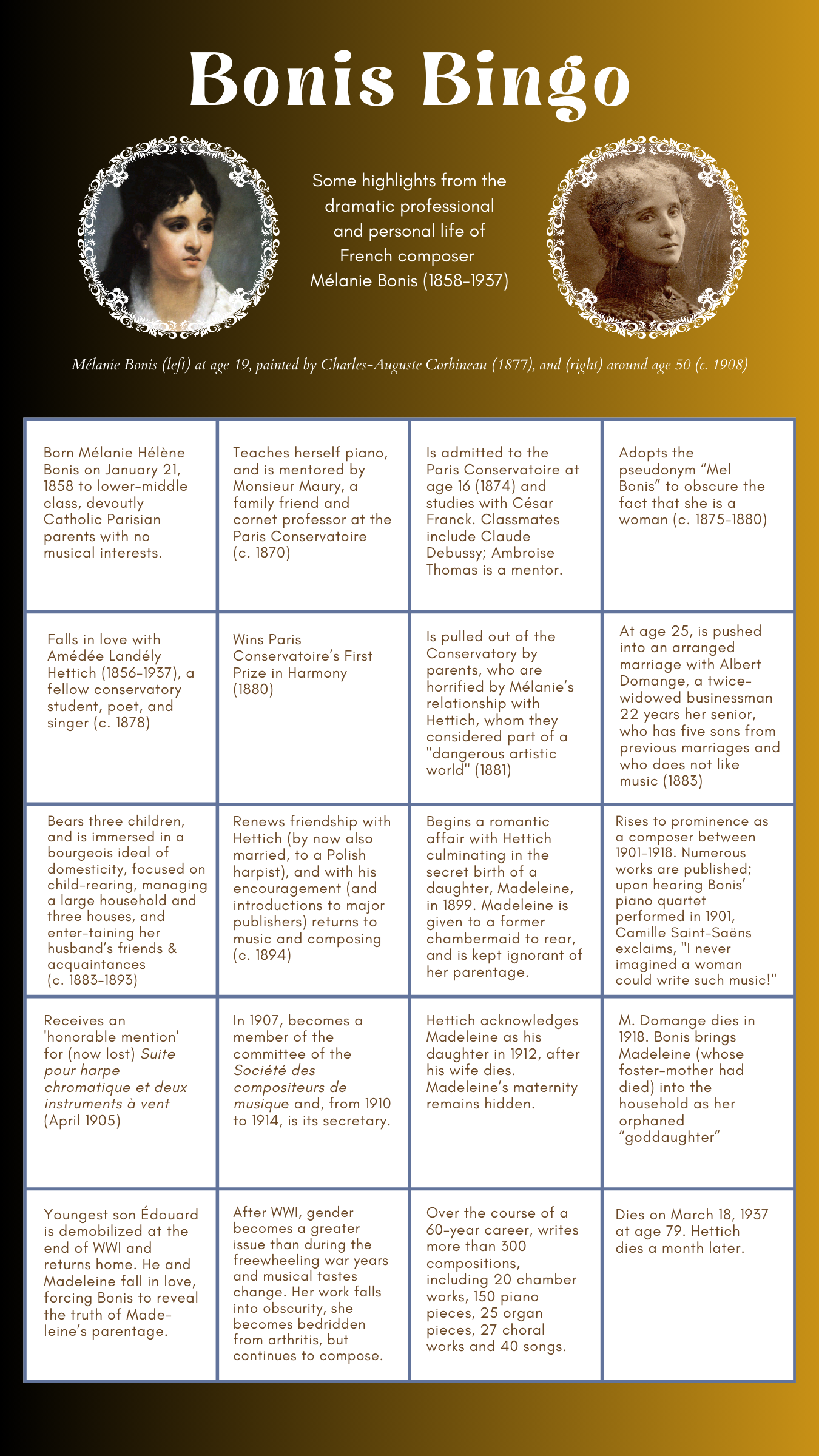Mélanie Bonis - A Complicated Life
Scroll down to play “Bonis Bingo”— a graphic representation featuring highlights from the dramatic professional and personal life of Mélanie Bonis
Mélanie Hélène Bonis (1858-1937) was a talented composer whose work bridged the Romantic and Impressionist eras. She was just thirteen years younger than Gabriel Fauré, and was a classmate of Claude Debussy and student of César Franck at the Paris Conservatory. Adopting the pseudonym “Mel Bonis” to obscure her gender—works by women composers were rarely published or performed—Bonis experienced significant success in the first two decades of the 1900s. Although she dwindled into obscurity during her later years, she never stopped composing, and wrote more than 300 compositions, including 20 chamber works, 150 piano pieces, 25 organ pieces, 27 choral works and 40 songs.
But behind this biography, Bonis led a complicated, dramatic, and in many ways tragic life, her genius and happiness squelched by societal notions of a woman’s respectability and her own deep-seated piety. Her musical talent emerged early and couldn’t be denied by her devout lower-middle class parents, but they were unable to overcome their fear of the "dangerous artistic world" Mélanie was exposed to at the Conservatory.
Torn away from her first love, fellow student Amédée Landély Hettich, Bonis was forced into an arranged marriage with a twice-widowed man 22 years her senior. For ten years, she put aside her music and attempted to embrace a new identity as a respectable bourgeoise mother and wife, entertaining on behalf of her businessman husband, managing five step-sons, three children, a Parisian mansion, and a summerhouse in Normandy.
Creativity stifled (her husband did not like music), Bonis eventually reconnected with Hettich. He encouraged her to return to music, and the two began a fruitful creative relationship, and, despite Bonis’s moral anguish—she was a devout Catholic—ultimately an affair, culminating in the birth of a daughter out of wedlock, Madeleine, in 1899. Madeleine’s parentage was hidden, and she was given to a former chambermaid to rear.
Bonis flourished as a composer between 1901 and 1918. Her work (under the masculine name “Mel Bonis”) was frequently published and performed, and upon hearing Bonis’s piano quartet performed in 1901, Camille Saint-Saёns exclaimed, "I never imagined a woman could write such music!" In 1905, she received an 'honorable mention' for her (now lost) Suite pour harpe chromatique et deux instruments à vent. In 1907, Bonis became a member of the committee of the Société des compositeurs de musique and, from 1910 to 1914, its secretary.
In 1918, Bonis’s husband, Albert Domange, died. Madeleine, whose foster mother had died, was brought into the household as Bonis’s “orphaned goddaughter.” But when Bonis’s youngest son, Édouard, was demobilized at the end of WWI and returned home, he and Madeleine fell in love, forcing Bonis to reveal the truth of Madeleine’s parentage.
Whether due to the trauma of the revelation of deeply buried family secrets, the return to more traditional gender roles at the end of the Great War, or a shift away from the Romantic and Impressionist music that formed Bonis’s oeuvre, Bonis began to fade into obscurity; in her later years she was crippled by arthritis, but continued composing throughout the 1920s and into the 1930s. Mélanie Bonis died in 1937 at age 79.


